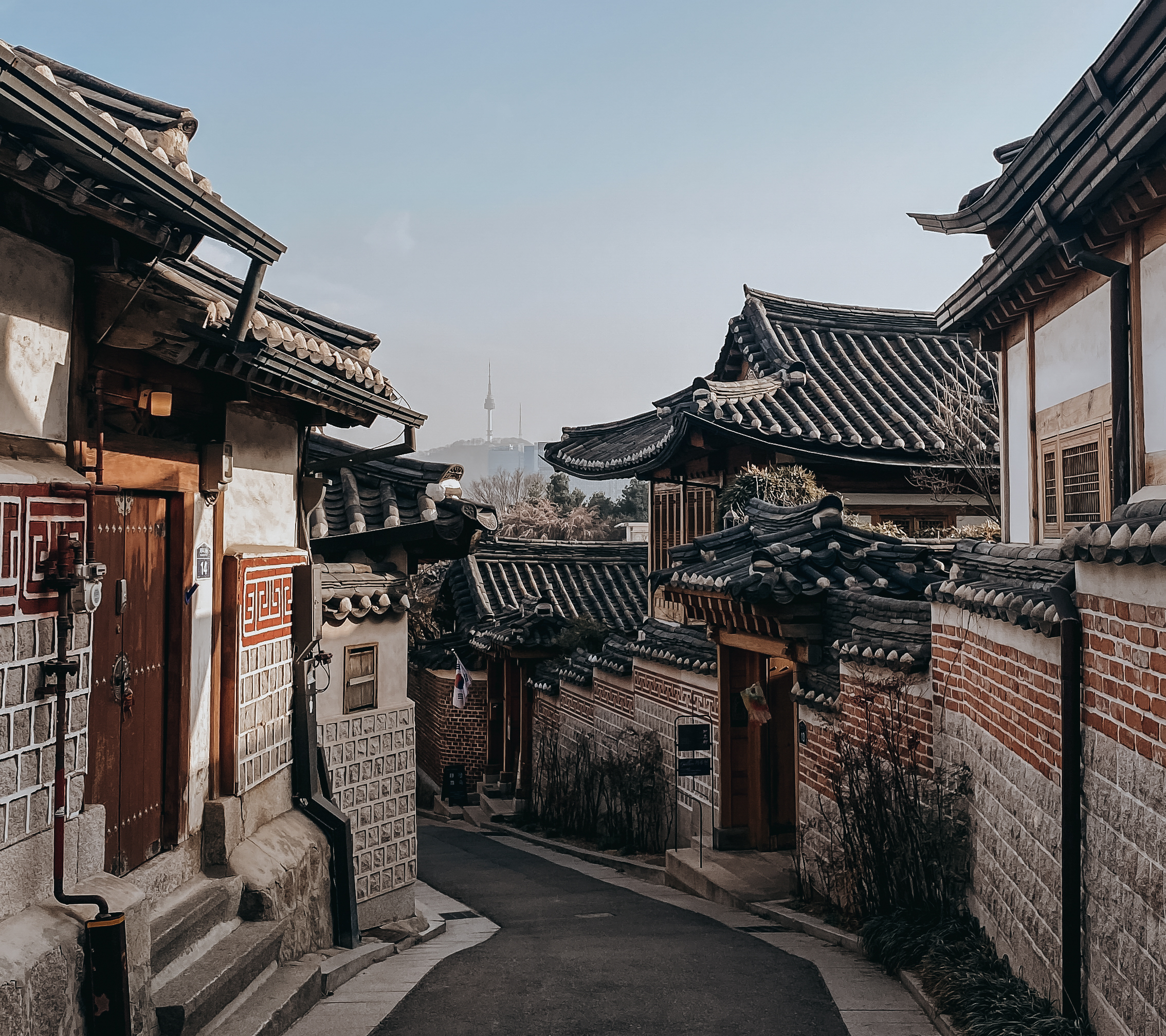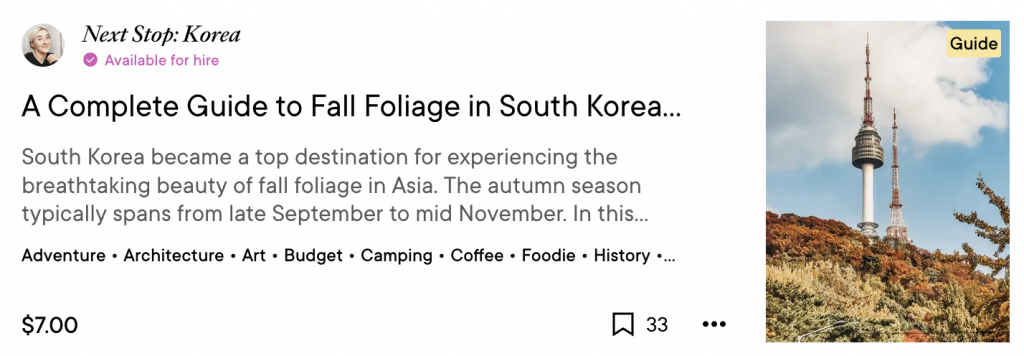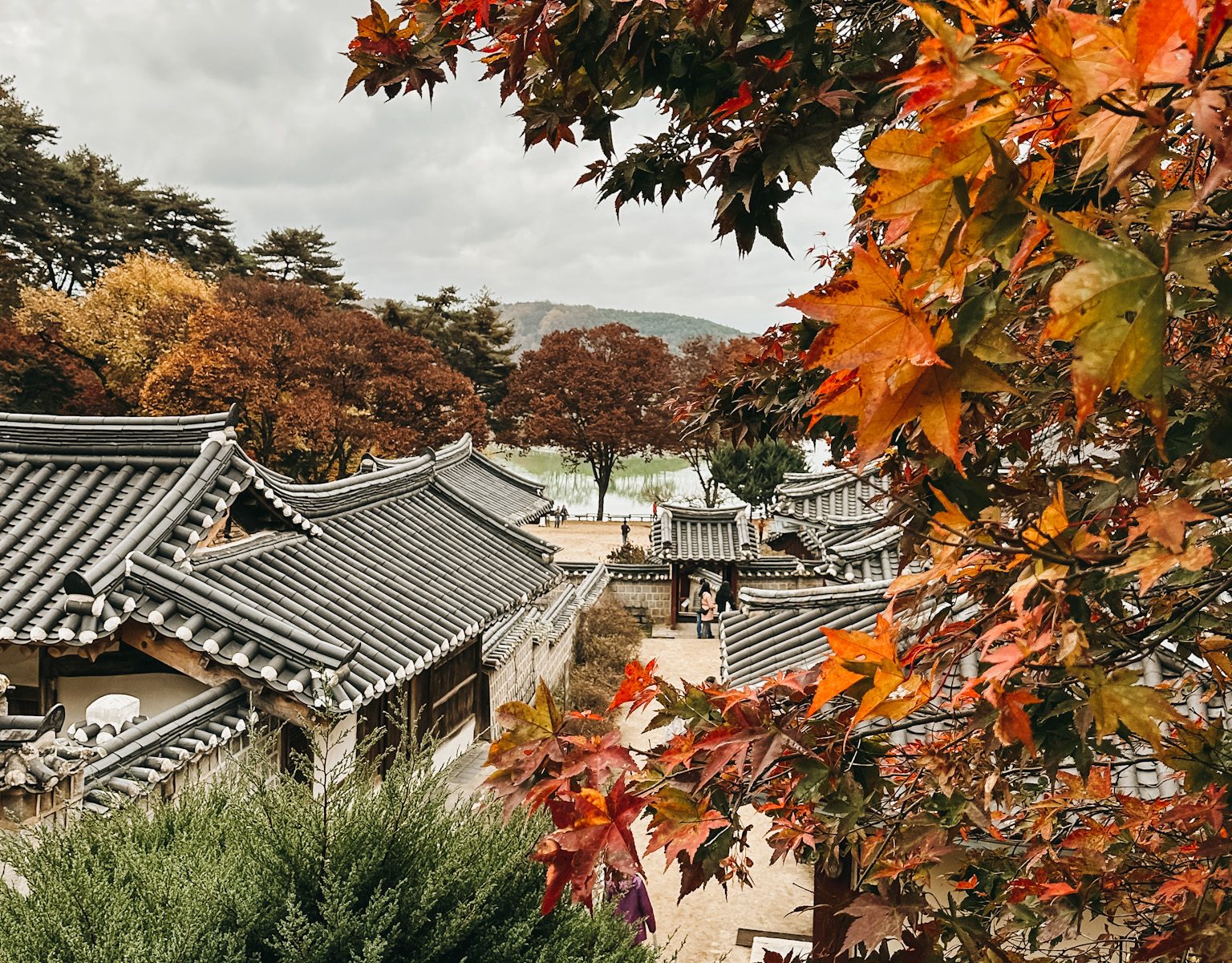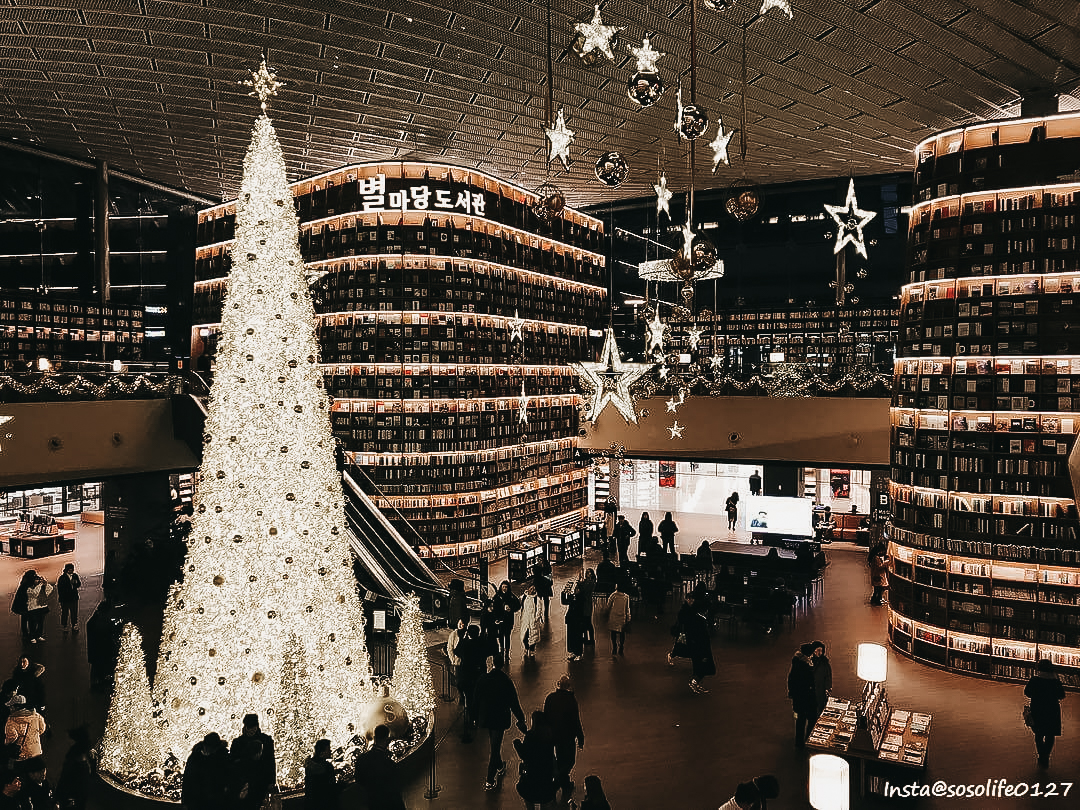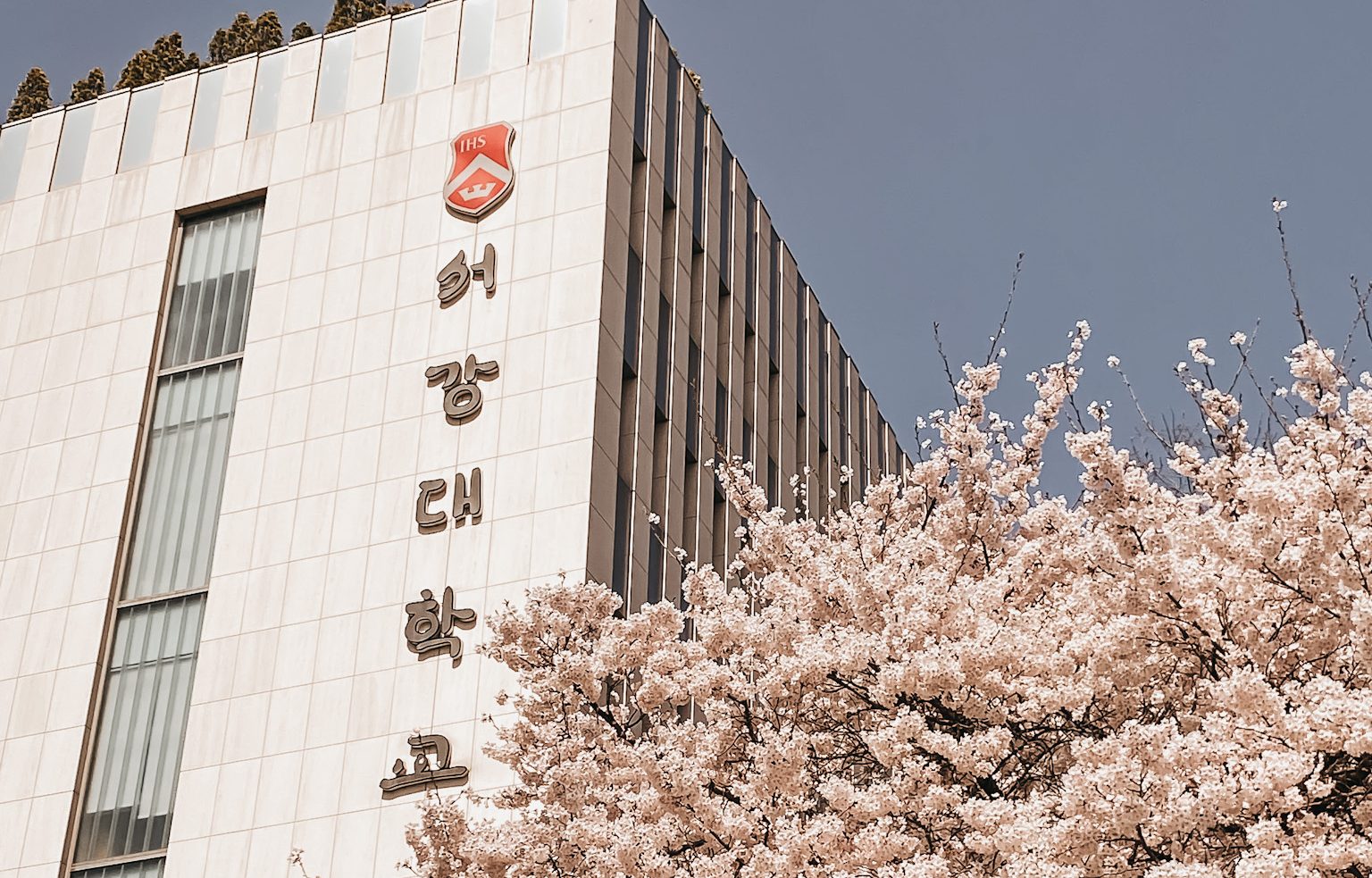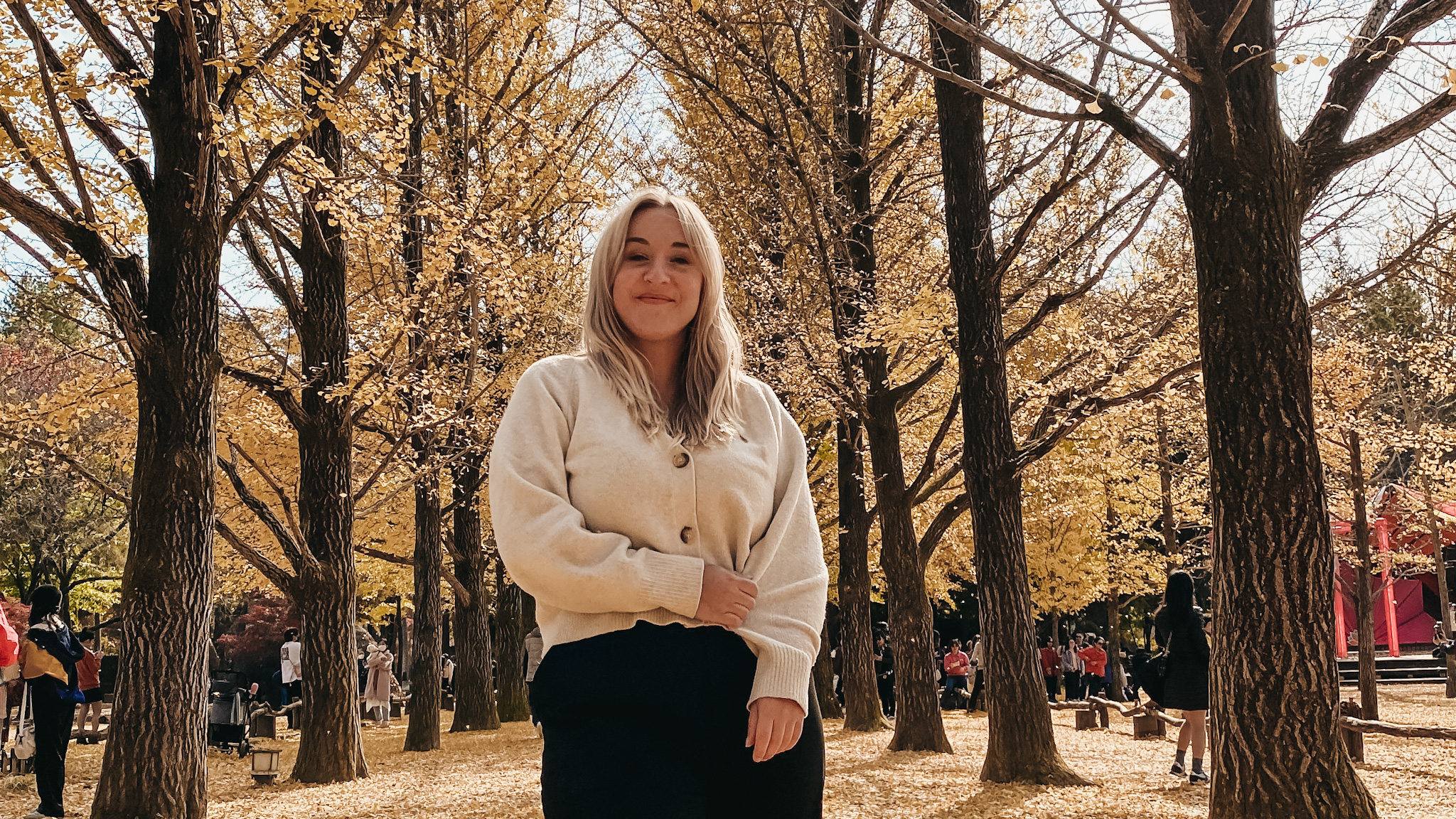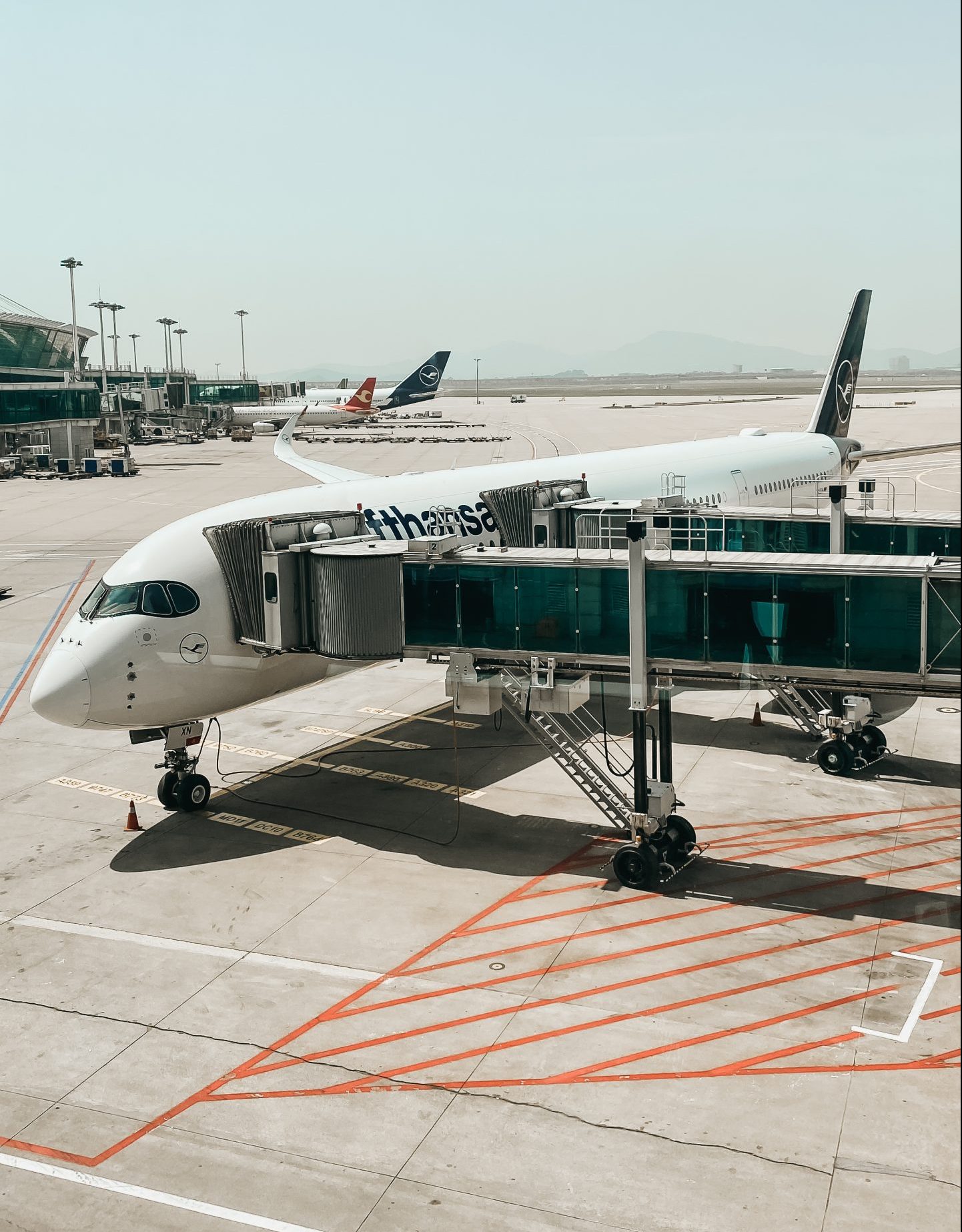South Korea became a top destination for experiencing the breathtaking beauty of fall foliage in Asia. The autumn season typically spans from late September to mid November. In this comprehensive guide, I will cover everything from the best times to visit and weather conditions to essential preparations, top spots in Seoul and beyond, and the stunning fall flowers and trees that grace the country.
In this post:
Toggle
When to Witness Fall Foliage
Fall foliage in South Korea typically occurs between late September and mid November. The exact timing varies each year, depending on the weather conditions, region and altitude. The vibrant colors begin to manifest in higher altitudes and gradually descend to lower elevations as the season progresses. To ensure the best experience, it’s advisable to plan your visit during end-October, when the foliage reaches its peak brilliance in many areas.
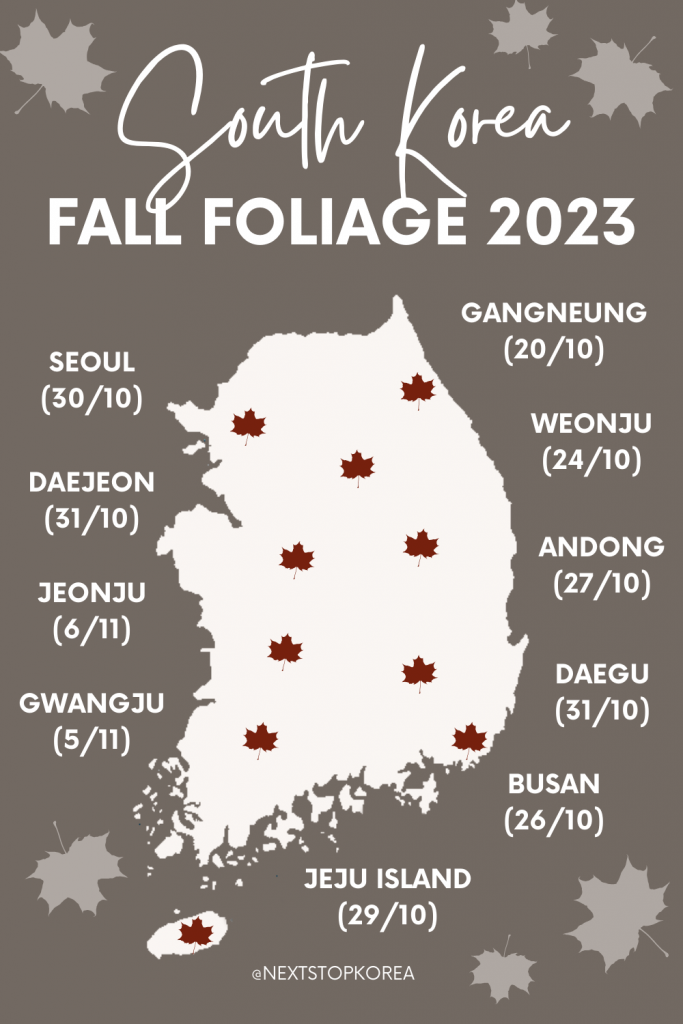
Weather and Fine Dust
Before embarking on your fall foliage adventure, it’s crucial to be prepared for South Korea’s autumn weather and be aware of the potential presence of fine dust particles in the air. During the fall season, South Korea experiences still warm to quite chilly temperatures. Average daytime temperatures range from 15°C to 20°C (59°F to 68°F) while nights tend to be a bit colder, so packing layers is a wise choice.
One important aspect to note is fine dust, often referred to as “yellow dust” or “Hwangsa.” This is a common meteorological phenomenon in South Korea, particularly during the fall and spring months. Fine dust can affect air quality and visibility, so it’s advisable to check air quality forecasts and wear a mask or opt for indoor activities.
What to Bring and Prepare
To make the most of your fall foliage experience in South Korea, here’s a checklist of items to bring and preparations to make:
Layered Clothing
Dress in layers to adapt to changing temperatures throughout the day. Don’t forget a warm jacket for chilly evenings.
Comfortable Footwear
Ensure you have comfortable walking shoes or hiking boots, especially if you plan to explore natural areas.
Camera
Bring your camera to capture the stunning scenery. Don’t forget spare batteries and memory cards. for this block. Use this space for describing your block.
Travel Adapters
South Korea uses Type C and Type F electrical outlets, so bring suitable adapters if required.
Cash & Card
Bring Korean Won (KRW) for small purchases, but don’t worry – major credit cards are widely accepted. In case your credit card is not excepted, check out the >Namane Card for Transportation & Payment.
Travel Insurance
Consider purchasing travel insurance for added peace of mind during your trip.
Translation App
Even though you can survive with English in tourist areas, having a basic understanding of Korean can be helpful. Find some Study Resources >here. And the Korean Translation App Papago will be your best buddy during the trip!
Portable Battery
Photos & Video, Navigation, Translating – your phone battery will go down quite quickly, so be prepared and carry extra power.
Travel Itinerary
Plan your itinerary in advance, including transportation details and a list of must-see locations.
Medications
Pack any necessary medications, as well as basic first-aid supplies.
Korean Public Holidays in Fall
South Korea has two public holidays during the fall season, which can affect travel plans and the availability of accommodations. Two major holidays to be aware of are Chuseok (Korean Thanksgiving Day) and Hangeul Day.
- Chuseok: Chuseok usually falls in late September or early October. It’s a time when Koreans gather with family and engage in ancestral rites. Many businesses may close during this period, and transportation may be crowded. Check my Chuseok Guide >here.
- Hangeul Day: Celebrated on October 9th, Hangul Day commemorates the creation of the Korean script, Hangeul. It’s a national holiday, and some attractions and businesses may close for the day.
Best Fall Foliage & Autumn Flower Spots in Seoul
Here some of the best locations to witness the vibrant colors of the season in the heart of South Korea’s capital:
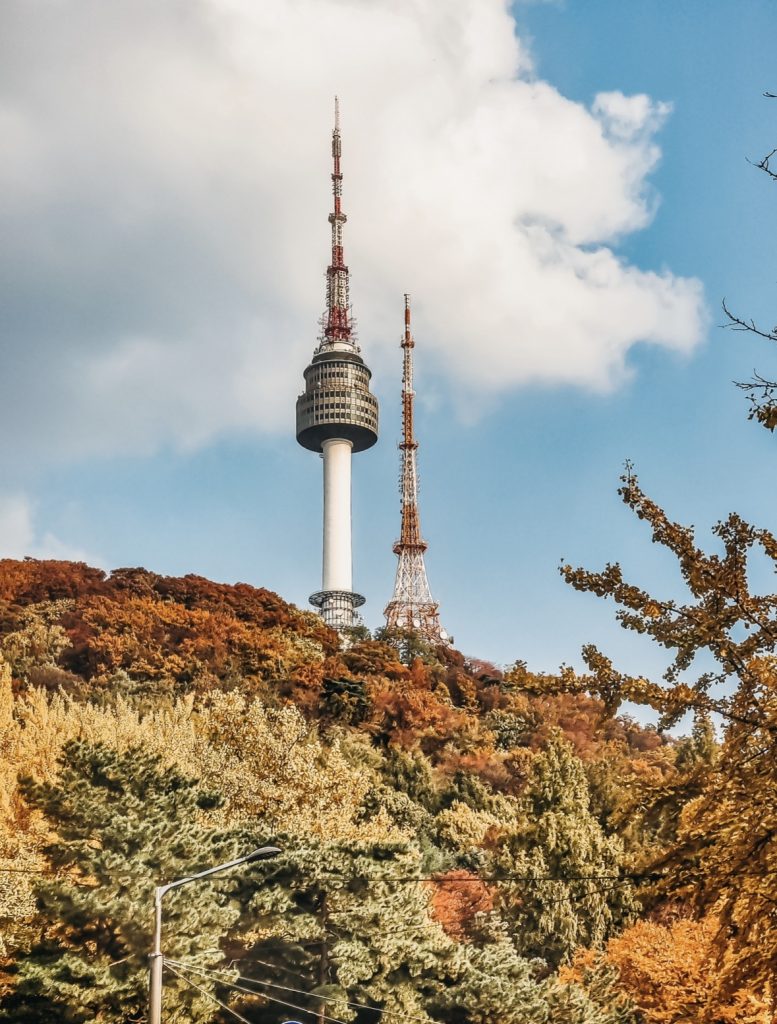
Namsan Park
Located around the Mountain and N Seoul Tower, Namsan Park offers stunning views of the city surrounded by colorful foliage. Visitors can also take the Namsan Cable Car or hike up to N Seoul Tower for even more breathtaking vistas of Seoul’s fall foliage. Buy tickets for the Tower & Cable Car >here.
The nearest subway station is Myeongdong Station (Line 4).
Address: 231, Samil-daero, Jung-gu, Seoul
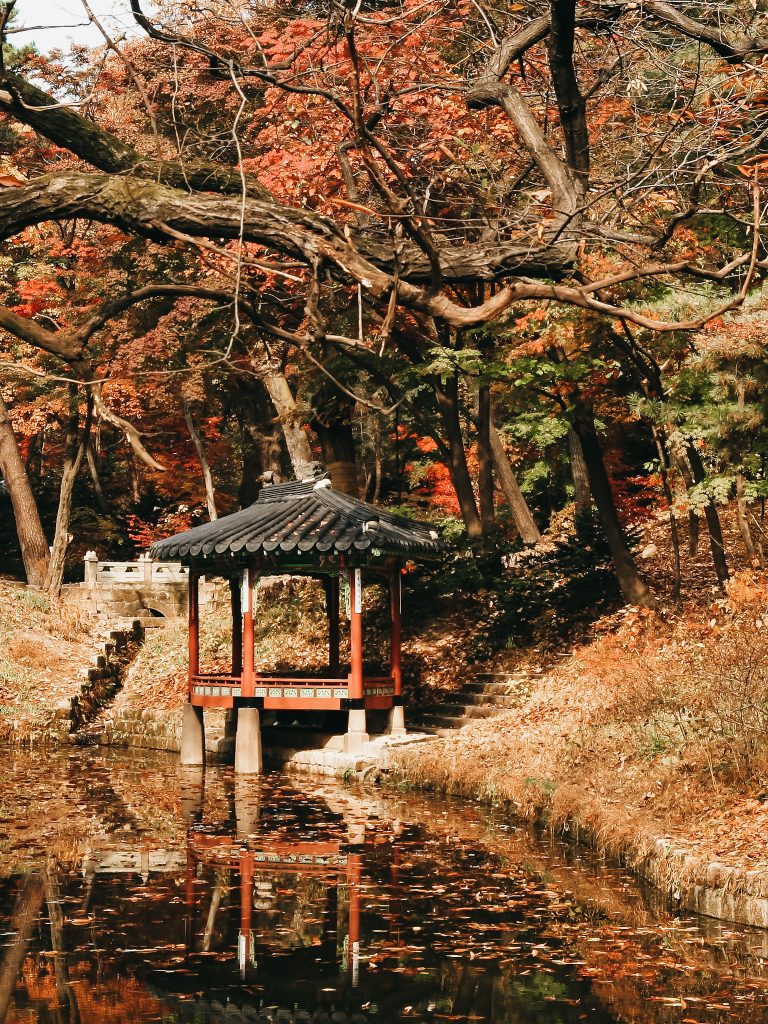
Seoul’s Palaces
The palace grounds of Seoul’s 5 Main Palaces are even more picturesque when surrounded by autumn leaves. Don’t miss the Guard Changing Ceremony at Gyeongbokgung Palace My Top recommendation is the Secret Garden of Changdeokgung Palace!
Nearest subway station is Anguk Station (Line 3).
Address: 99, Yulgok-ro, Jongno-gu, Seoul
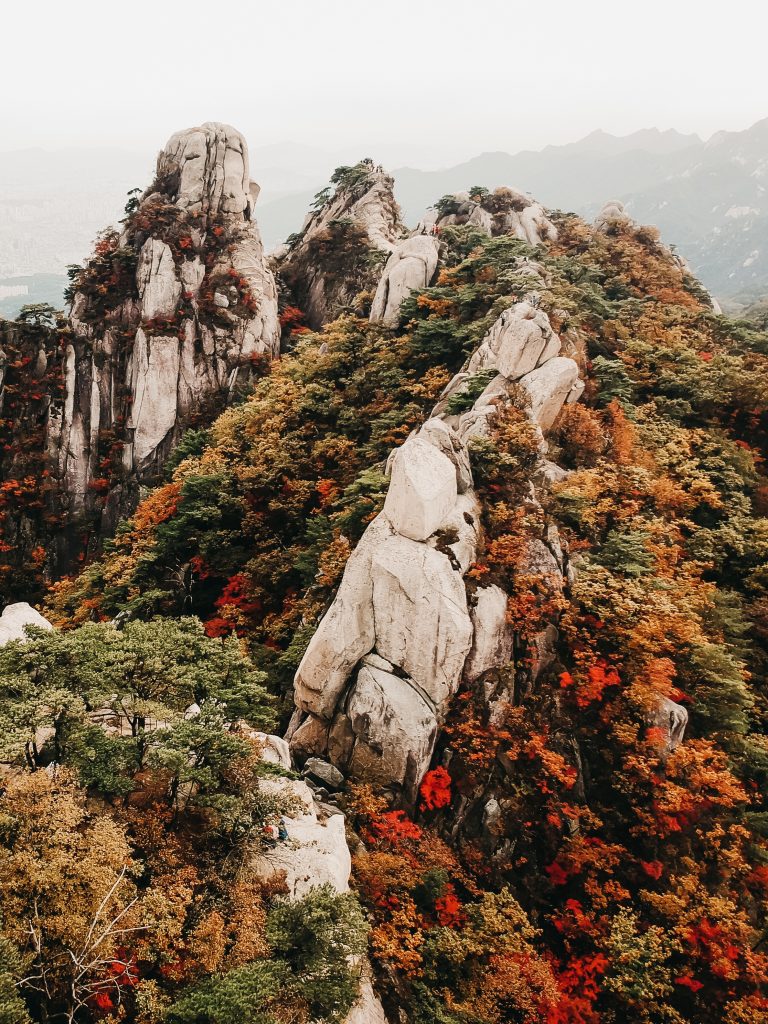
Bukhansan National Park
This famous park right behind Gyeongbokgung and the Blue House boasts hiking trails and panoramic views of Seoul’s autumn landscape. The most popular trail, Baegundae Peak, offers a challenging hike rewarded with stunning views at the summit.
Nearest subway station is Gupabal Station (Line 3).
Address: San 1-1, Jeongneung-dong, Seongbuk-gu, Seoul
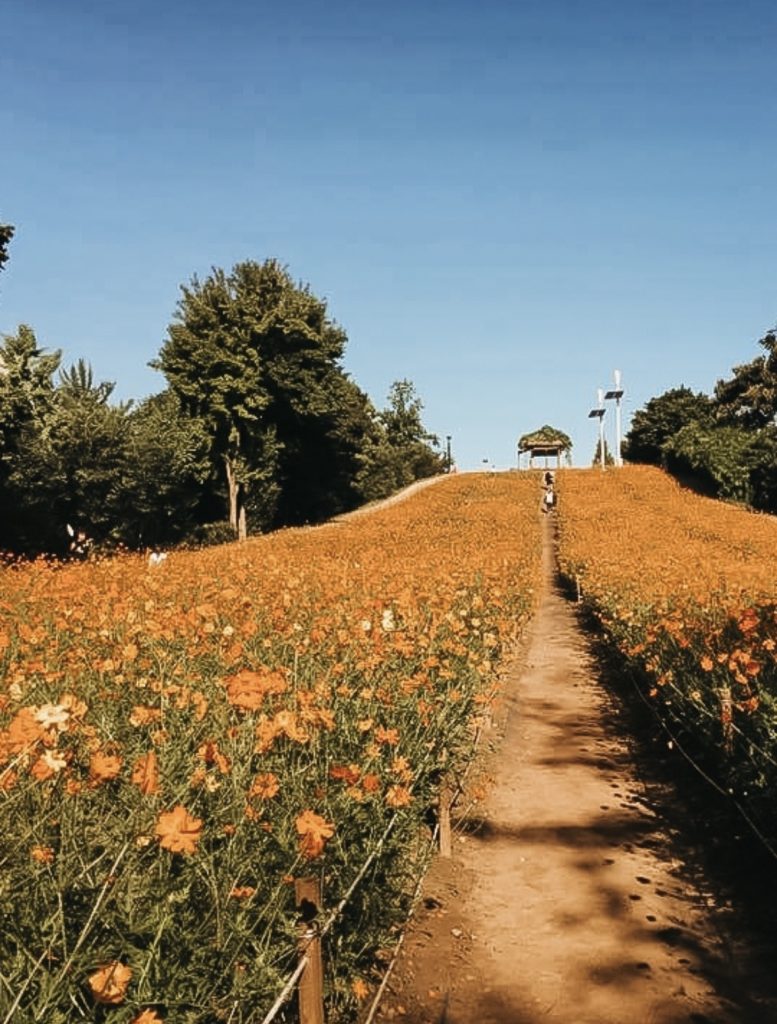
Olympic Park
A modern park with various sculptures and gardens, perfect for leisurely strolls among autumn colors – especially famous: the Cosmo Fields. Olympic Park also hosts various cultural events and outdoor concerts, making it a vibrant hub for entertainment during fall.
Nearest subway station is Olympic Park Station (Line 5).
Address: 88, Oryun-dong, Songpa-gu, Seoul
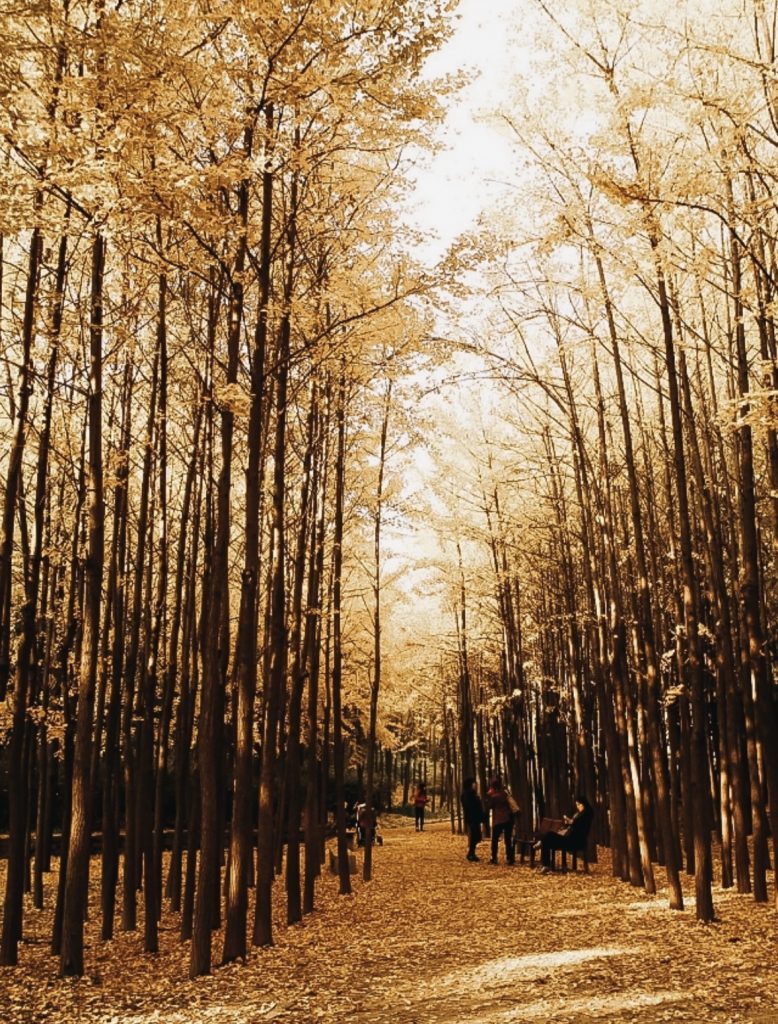
Seoul Forest
A peaceful oasis within the bustling city, offering tranquil walks through wooded areas and great picnic spots. Seoul Forest includes a deer park inside the Eco Forest where visitors can get up close with these gentle creatures, adding a unique touch to your visit. You can also book a tour in combination with other hotspots >here.
Nearest subway station is Olympic Park Station (Line 5).
Address: 88, Oryun-dong, Songpa-gu, Seoul
Find more in my Complete Fall Foliage Guide!
↓ Get it for 5$ when using the code FALL25 ↓
Non Hiking Fall Spots Outside Seoul
I always recommend travelers to leave the city – especially during Fall Foliage that is a MUST! Here some great spots to visit during Fall Foliage outside of Seoul, that are perfect for everyone and don’t require long Hikes.







Nami Island
Nami Island is a picturesque oasis known for its tree-lined paths, where vibrant autumn leaves create a stunning canopy, making it a top destination for fall foliage enthusiasts.

Garden of Morning Calm
The Garden of Morning Calm is a tranquil haven for nature lovers, where colorful foliage mingles with meticulously landscaped gardens, creating a serene autumn escape.

Hwadam Forest
Hwadam Forest is a lush woodland where you can immerse yourself in the vibrant colors of autumn, with its diverse flora and serene hiking trails.

Jecheon
Experience the stunning “Cheongpung Cultural Heritage Complex” amidst autumn hues in Jecheon, a perfect blend of cultural heritage and natural beauty.

Gyeongju
The ancient city of Gyeongju becomes even more charming in the fall, with its historic sites adorned in fall colors and the serene beauty of Bomun Lake.

Suwon
Suwon’s urban charm meets nature’s beauty in the fall, with the city providing a vibrant backdrop to explore its historic sites and parks.

Demilitarized Zone
The Demilitarized Zone (DMZ) offers a unique perspective on fall foliage, where nature flourishes amid the historic tensions of this border region.

Find more in my Complete Fall Foliage Guide!
↓ Get it for 5$ when using the code FALL25 ↓
10 Best Autumn Hikes Outside of Seoul
Of course the most beautiful Fall Foliage can be seen in the untouched nature of various mountains in South Korea. Here the 10 best Hikes for Fall Foliage. But even here a little secret: the guided tours I linked here usually offer easy hikes or beautiful photospots even in walking distance from the Parking lot.
Seoraksan, Sokcho (>Guided Tour)
Naejangsan, Jeongeup (>Guided Tour)
Daedunsan, Daejeon (>Guided Tour)
Jirisan, Hadong (>Guided Tour)
Gayasan, Daegu
Songnisan, Boeun
Sobaeksan, Danyang (>Guided Tour)
Hallasan, Jeju (>Guided Tour)
Jaeyaksan, Miryang (>Guided Tour)
Palgongsan, Yeongcheon (>Guided Tour)
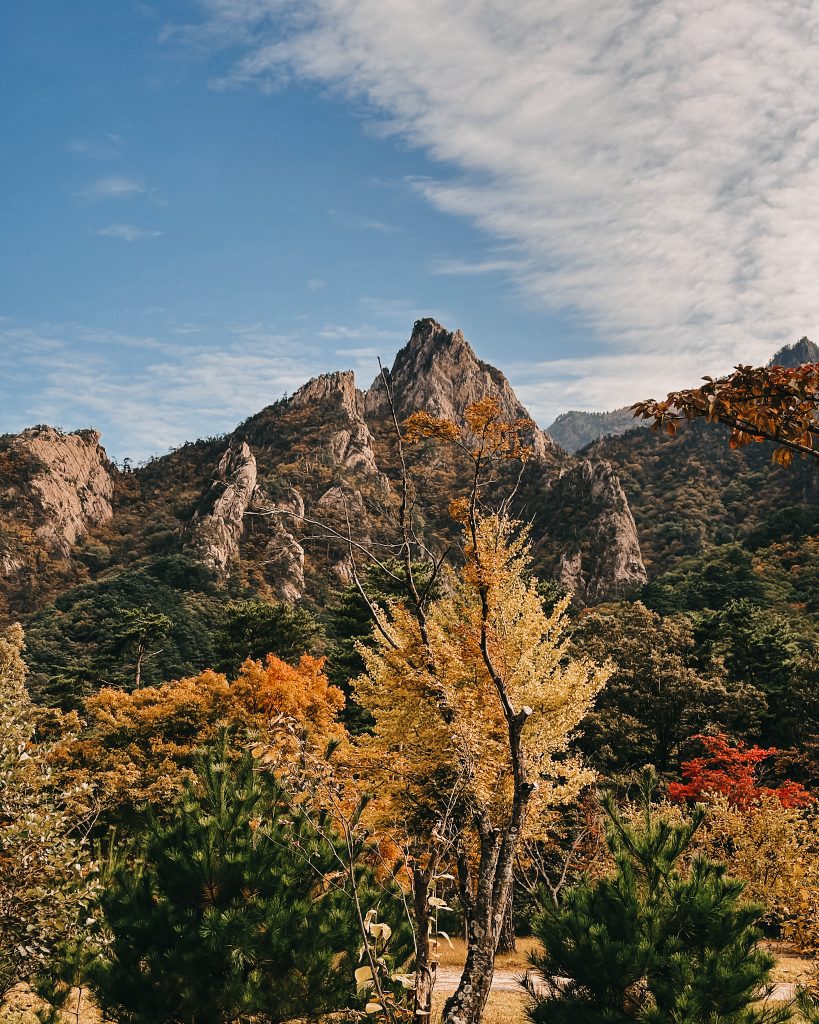
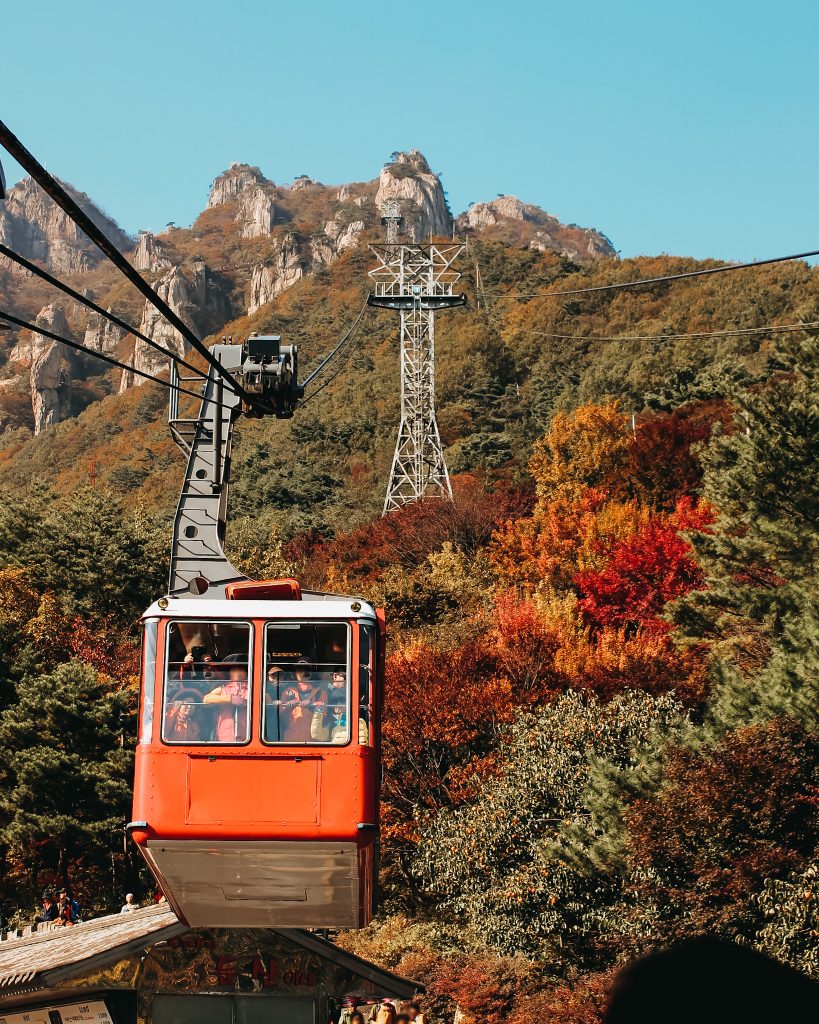
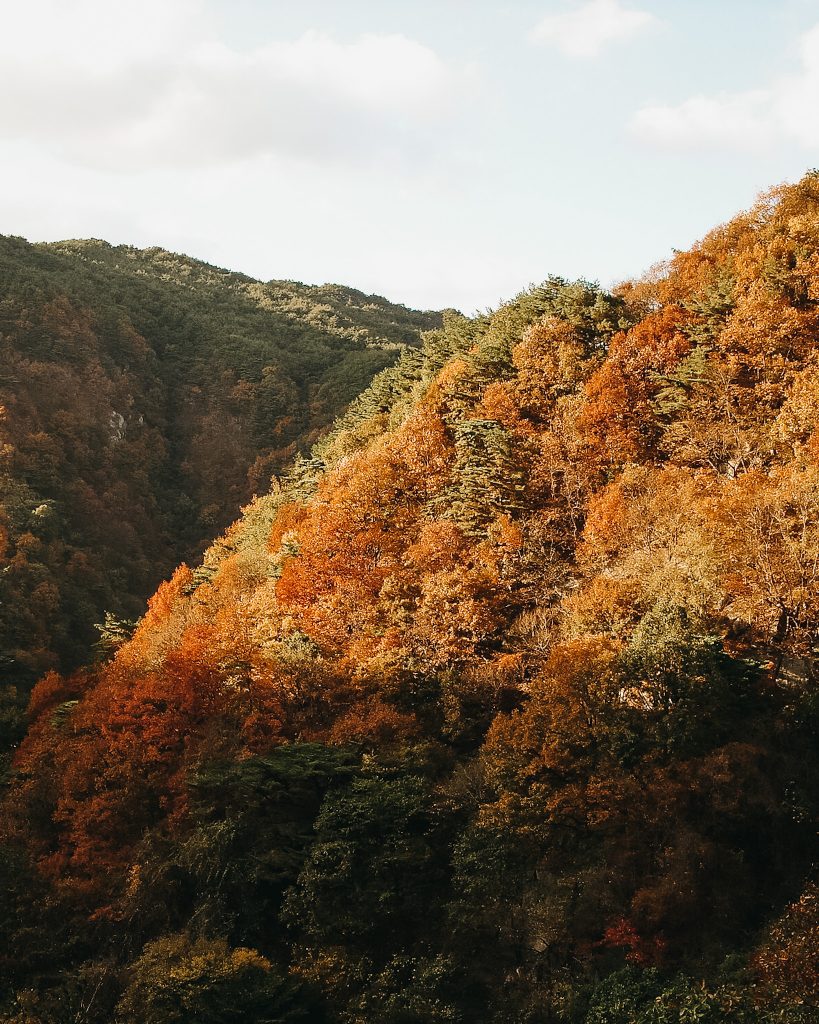
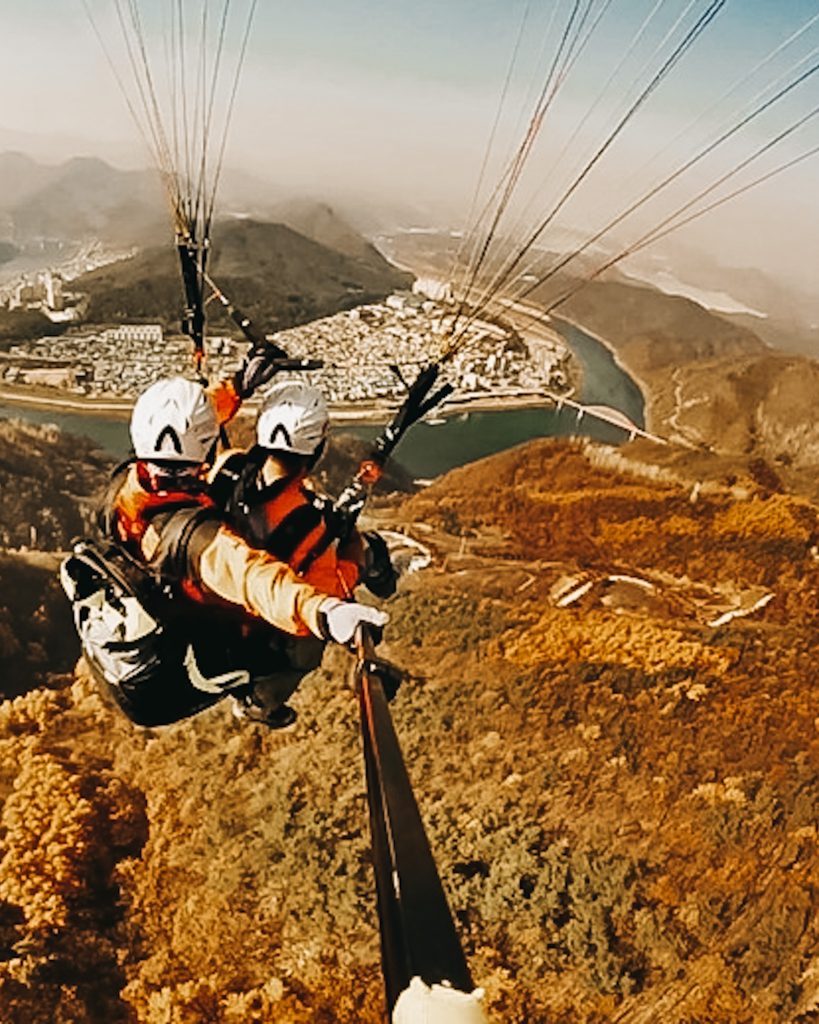
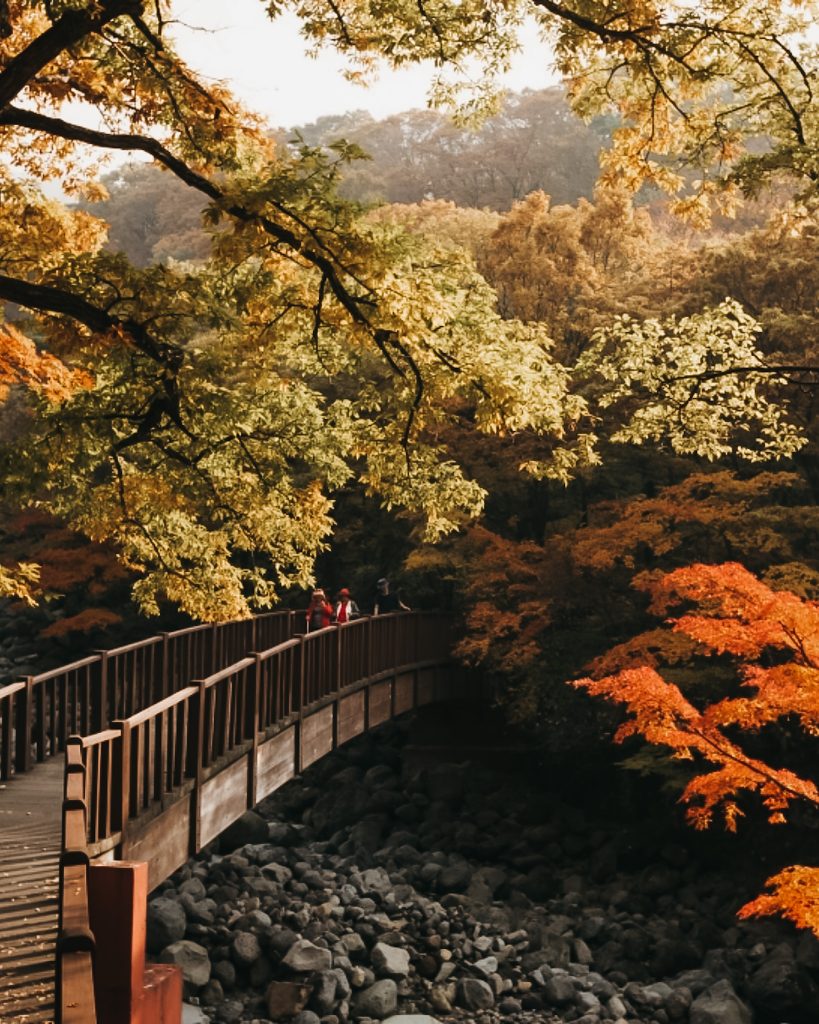
Fall Festivals in South Korea
Fall is a great time for different kind of Festivals in Korea – from music, Culture, Art, Fireworks, Food or in general Fall Foliage or Fall Flower Festivals.
Seoul International Fireworks Festival
Usually held in early October, this FREE event at Yeouido Hangang Parkfeatures dazzling fireworks and drone shows above Han River. (>Website)
2024: TBA
Seoul & Gwangju Kimchi Festival
Participate in kimchi-making activities in Gwangju or Seoul while enjoying the autumn weather in early November.
2024: October 18-20
Andong International Mask Dance Festival
A vibrant celebration of Korea’s traditional mask dance heritage, drawing performers from around the world to showcase diverse mask dance traditions. (>Website)
2024: September 27 – October 6
Busan International Film Festival
Early to Mid October is a great time to catch world-class films in Busan. (>Website)
2024: October 2 – 11
Find more in my Complete Fall Foliage Guide!
↓ Get it for 5$ when using the code FALL25 ↓
Korean Fall Foliage Tree Species
As the season progresses, different trees undergo their own unique transformations, creating a stunning tapestry of colors. Here’s a list of some of the prominent tree species and their changing hues during the fall:
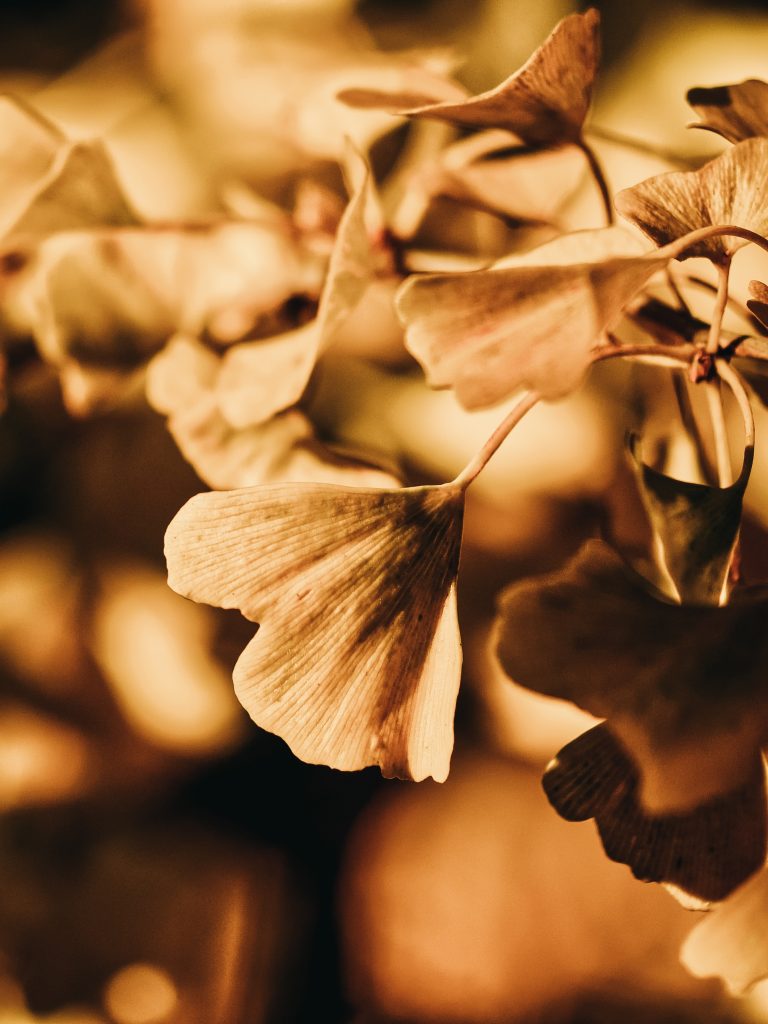
Ginkgo Trees (은행나무 – Eunhaeng Namu)
- Appearance: Ginkgo trees feature distinct fan-shaped leaves that turn a brilliant golden-yellow in the fall.
- Timing: Ginkgo leaves typically start turning golden in late September, marking the beginning of the fall foliage season.
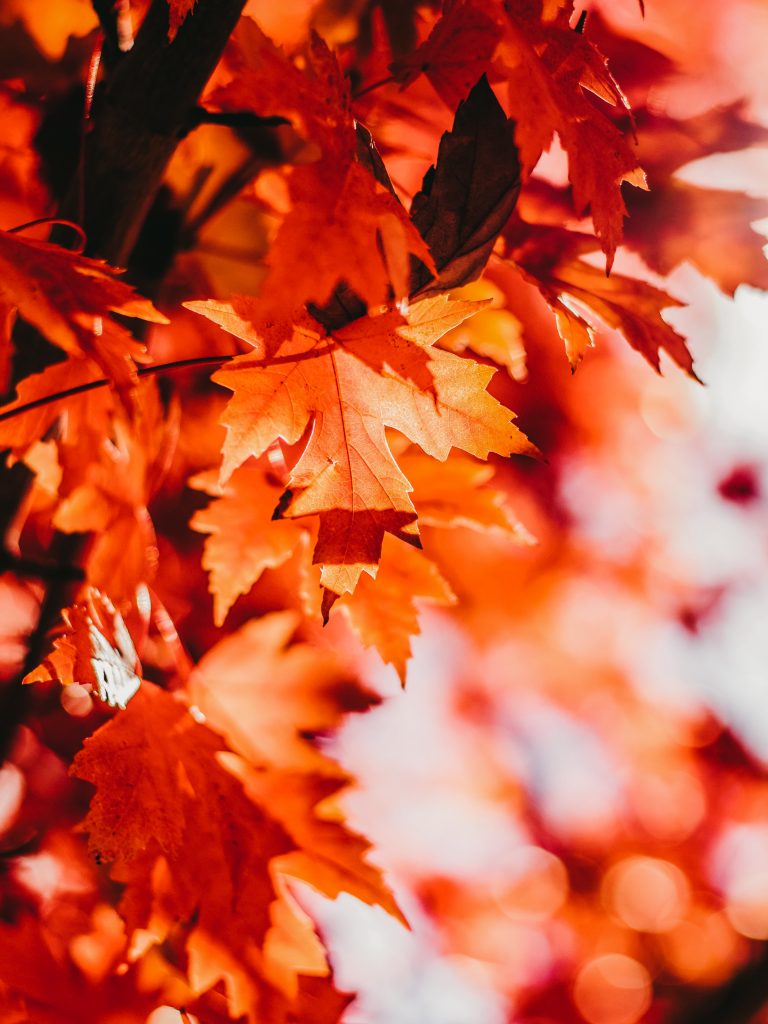
Maple Trees (단풍나무 – Danpung Namu)
- Appearance: Maple trees showcase a wide range of autumn colors, from fiery reds to bright oranges.
- Timing: Maple trees usually begin to change colors in early to mid-October, depending on the region and altitude.
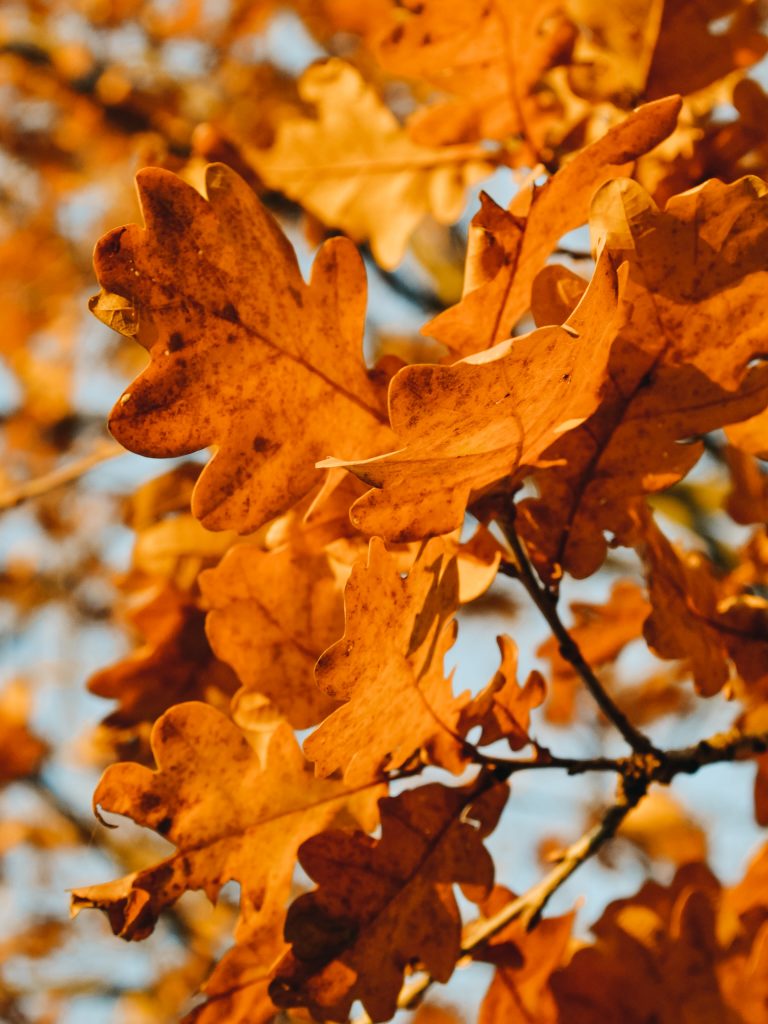
Oak Trees (떡갈 나무 – Ddeokgal Namu)
- Appearance: Oak trees have rich green leaves that transform into a deep red or russet hue in the fall.
- Timing: Oak leaves tend to change colors in mid to late October, creating a captivating contrast with evergreen trees.
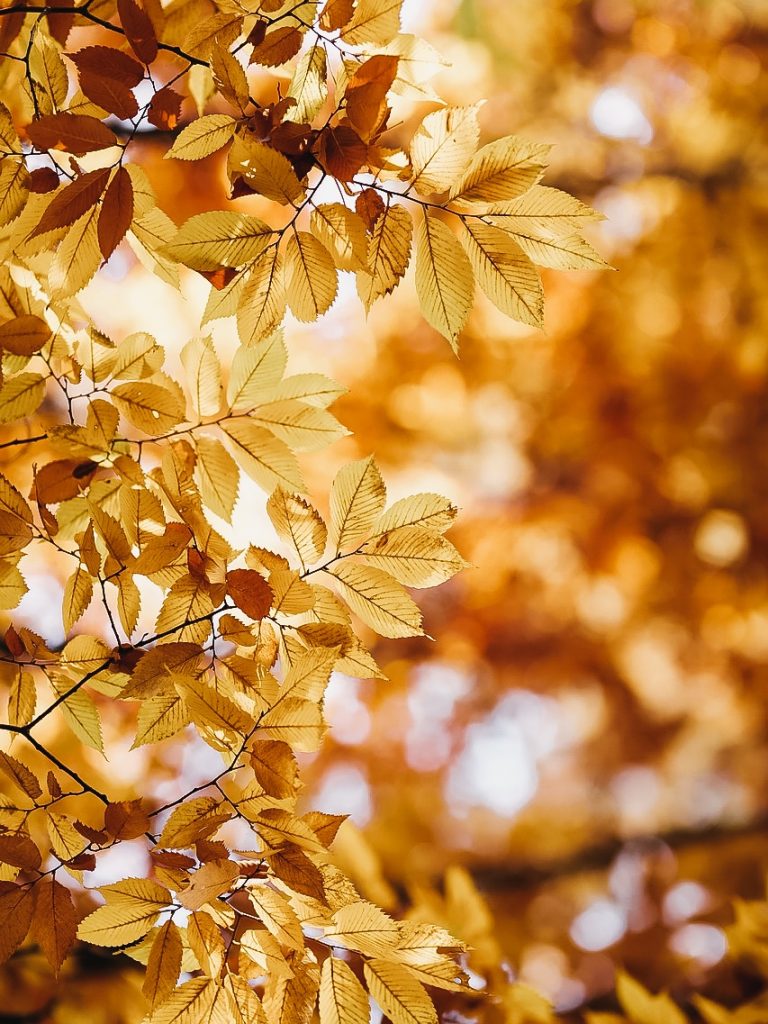
Zelkova Trees (느티 나무 – Neuti Name)
- Appearance: Zelkova trees boast deep green foliage that gradually transitions to shades of orange and red.
- Timing: Zelkova trees typically change colors from late October to early November.
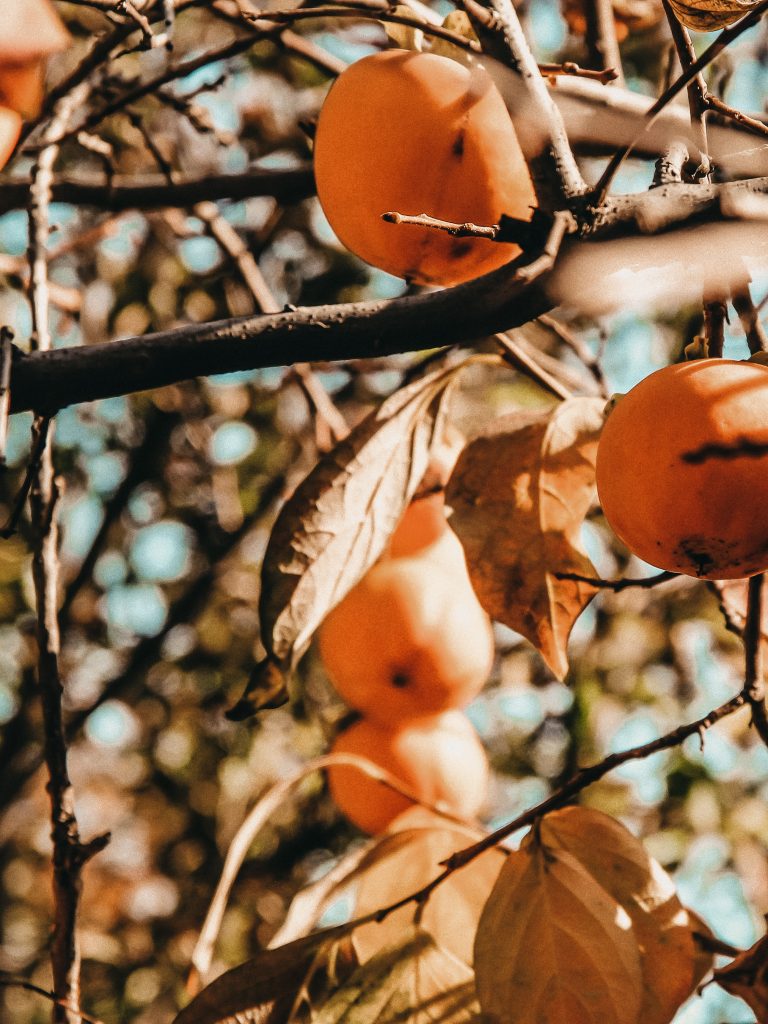
Persimmon Trees (감 나무 – Gam Namu)
- Appearance: Persimmon trees, known for their delicious fruits, also offer a delightful display of orange and yellow leaves in the fall.
- Timing: The leaves of persimmon trees typically change colors in late November to early December.
Fall Flowers in South Korea
While the focus of autumn in South Korea is typically on the vibrant tree foliage, the season also brings forth beautiful fall flowers:
Hibiscus (무궁화 – Mugunghwa)
August – End September
The national flower of South Korea, the Hibiscus blooms from summer through early autumn, with its vibrant red petals adding a splash of color to the landscape
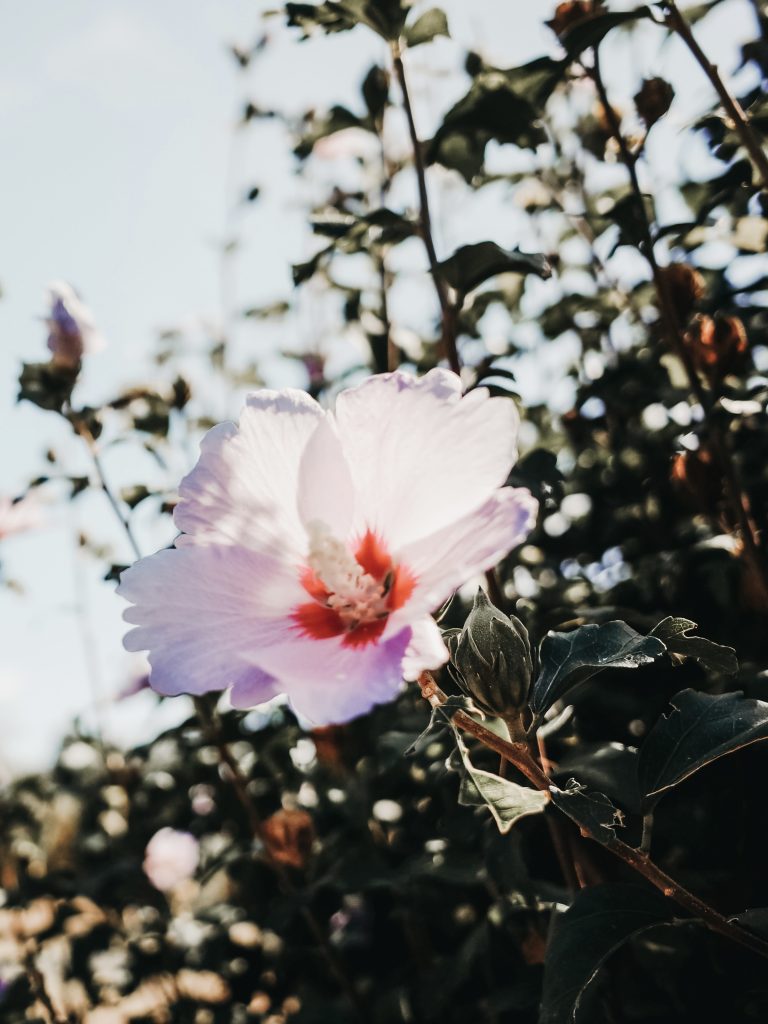
Buckwheat (메밀 – Memil)
September
Buckwheat flowers usually bloom in late August to early September, marking the late summer to early autumn season.
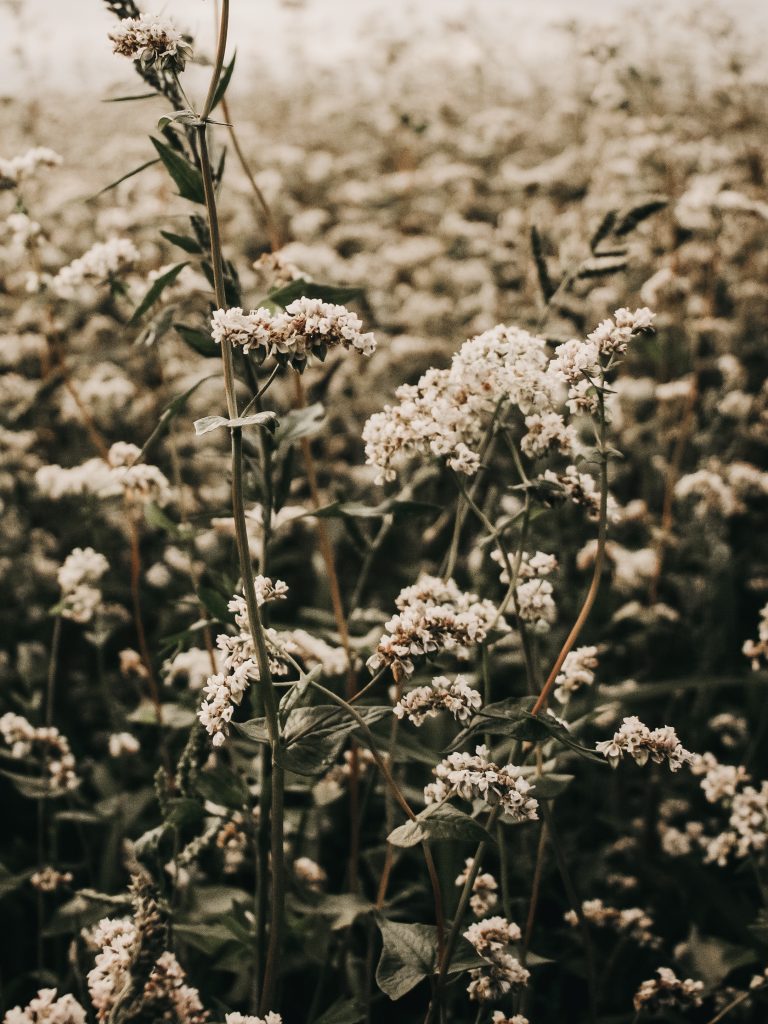
Muhly (뮬리 – Myulli)
September – early November
Muhly grass, also known as Pink Muhly, exhibits its stunning pink plumes in the fall, creating a dreamy and romantic atmosphere in gardens and landscapes.

Find more in my Complete Fall Foliage Guide!
↓ Get it for 5$ when using the code FALL25 ↓

With this guide you got the right information you need to find the best spots and festivals to deep dive into the beauty of autumn in this captivating country. Whether you explore the bustling streets of Seoul, venture into Korea’s national parks, or simply savor the fall flowers, I hope your journey through South Korea’s autumn will be an unforgettable experience.
